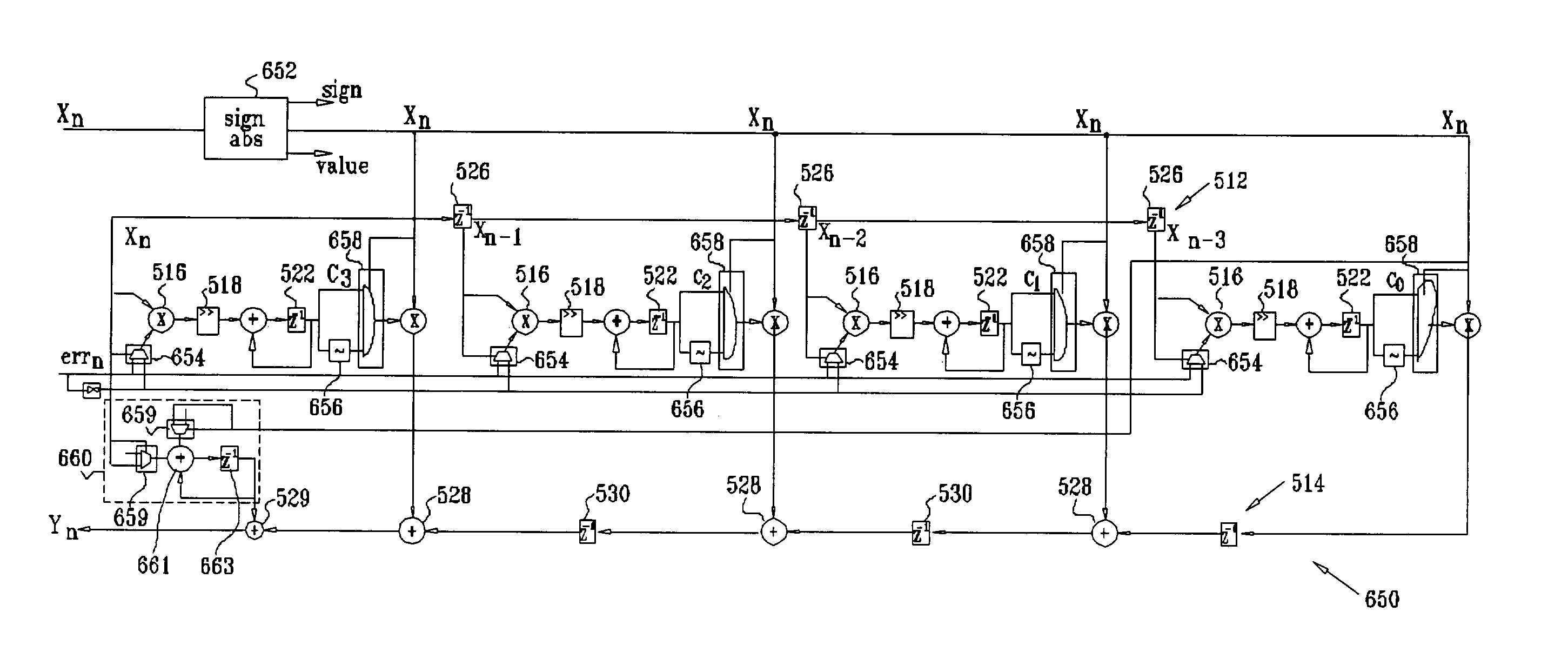Filter with multipliers operating in ones complement arithmetic
a filter and multiplier technology, applied in the field of data communication, can solve the problems of increasing the processing requirements of received signals, increasing the impairment of received signals, and the difficulty in meeting the requirements of transmitting signals over existing infrastructures, so as to reduce the total number of elements in the filter, reduce the power consumption of adaptation, and reduce the use of chip area. effect of power consumption
- Summary
- Abstract
- Description
- Claims
- Application Information
AI Technical Summary
Benefits of technology
Problems solved by technology
Method used
Image
Examples
Embodiment Construction
[0123]Reference is now made to FIG. 1, which is a schematic block diagram of a transceiver 20, according to a preferred embodiment of the present invention. Transceiver 20 is most preferably implemented from one or more custom devices, such as one or more application specific integrated circuits (ASICs). Alternatively, transceiver 20 is implemented from semi-custom or discrete devices, or a combination of custom, semi-custom and / or discrete devices. Transceiver 20 is coupled to a communication line 22, comprising four twisted pairs of conductors preferably implemented as Category 5 cables, so as to transmit and receive data at rates of the order of 1 Gb / s. Alternatively, communication line 22 may be implemented by other methods, known in the art, for conveying data at these rates. The data is transmitted as five-level pulse amplitude modulation (PAM-5) signals, according to an Ethernet protocol described in IEEE standard 802.3ab, each of the pairs of conductors transmitting and rece...
PUM
 Login to View More
Login to View More Abstract
Description
Claims
Application Information
 Login to View More
Login to View More - R&D
- Intellectual Property
- Life Sciences
- Materials
- Tech Scout
- Unparalleled Data Quality
- Higher Quality Content
- 60% Fewer Hallucinations
Browse by: Latest US Patents, China's latest patents, Technical Efficacy Thesaurus, Application Domain, Technology Topic, Popular Technical Reports.
© 2025 PatSnap. All rights reserved.Legal|Privacy policy|Modern Slavery Act Transparency Statement|Sitemap|About US| Contact US: help@patsnap.com



